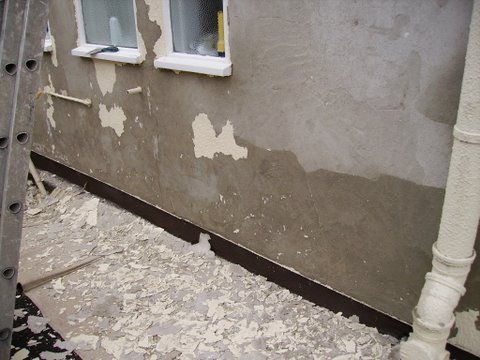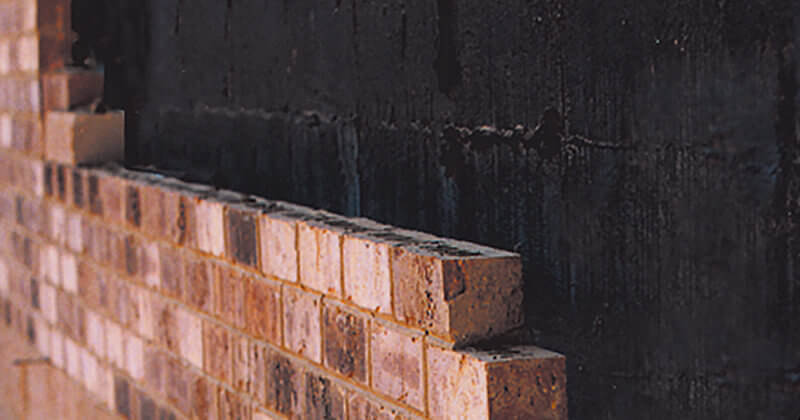Expert-approved tips for damp specialist newcastle to preserve your building's integrity
Expert-approved tips for damp specialist newcastle to preserve your building's integrity
Blog Article
Discovering the Numerous Techniques and Solutions for Effective Damp Proofing
Dampness in structures positions significant challenges to both architectural integrity and interior air quality. Various techniques and options have actually emerged to battle this pervasive concern. From typical damp-proof membranes to ingenious chemical therapies, each approach supplies one-of-a-kind benefits. Comprehending these alternatives is essential for efficient dampness control. Selecting the best remedy depends on particular building conditions and demands, motivating additional expedition right into the most efficient wet proofing methods readily available.
Understanding the Root Causes Of Wetness
Wetness can occur from numerous sources, recognizing these reasons is important for reliable removal. Frequently, dampness stems from 3 key sources: climbing moist, penetrating damp, and condensation. Increasing wet takes place when groundwater travels upwards via permeable materials, such as brick or rock, often because of a lack of an effective obstacle (damp specialist newcastle). Permeating moist is generally created by exterior variables, consisting of roof leakages, malfunctioning gutters, or harmed wall surfaces, allowing water to penetrate a home. Condensation, on the other hand, arises from excess dampness in the air, usually intensified by bad air flow and temperature level distinctions, resulting in water beads forming on surface areas. Determining these underlying concerns is vital, as each type of moisture calls for a tailored method for removal. Proper assessment assists in identifying one of the most effective services, ultimately protecting the structural stability of a building and boosting interior air high quality
Standard Damp-Proof Membrane Layers

Chemical Damp-Proofing Solutions
Chemical damp-proofing options use an innovative strategy to stop dampness intrusion in structures. These methods usually involve the application of liquid chemicals that penetrate stonework and form a barrier against climbing wet. Typically made use of chemicals consist of silanes, siloxanes, and other water-repellent representatives that react with surface products to develop a hydrophobic layer.The application procedure usually calls for drilling openings into the walls, injecting the chemical solution, and enabling it to heal. This method is especially advantageous for older structures where standard damp-proof membranes might be impractical. Additionally, chemical damp-proofing can be less disruptive and a lot more economical than comprehensive improvement projects.While effective, these services rely on correct application and ecological conditions for peak efficiency. Routine maintenance and monitoring are necessary to ensure the long life of the damp-proofing treatment. On the whole, chemical damp-proofing stands for a flexible alternative for securing structures versus moisture-related damages
Cavity Wall Surface Building Techniques
Dental caries wall construction methods provide numerous advantages, specifically in moisture control and energy effectiveness. By incorporating an air void in between two layers of stonework, these wall surfaces effectively alleviate water access while enhancing insulation. This mix not only safeguards structures from wetness but also adds to decreased power intake.
Benefits of Tooth Cavity Walls
When considering effective damp proofing techniques, the advantages of cavity walls stick out prominently. Cavity walls contain 2 separate layers, creating an air gap that effectively lowers moisture penetration. This style minimizes the danger of wetness, as the external wall works as an obstacle versus rain and water access. Furthermore, dental caries walls enhance thermal insulation, which adds to power effectiveness by reducing heat loss. They additionally supply audio insulation, helping to produce a quieter interior environment. The air gap allows for air flow, which assists in moisture control and minimizes the chance of mold development. These benefits not only enhance the overall comfort of a building yet also contribute to its long life and structural honesty.
Moisture Control Strategies
Effective wetness control methods are crucial in tooth cavity wall building and construction to assure long-term security versus wetness. One key method involves the incorporation of weep holes, which promote water drain from the cavity, protecting against accumulation. Additionally, the use of breathable membrane layers can help take care of moisture degrees while enabling caught vapor to escape. Correct placement of insulation is additionally crucial, as it must not block drainage paths. Furthermore, ensuring that the outer leaves of the dental caries wall are built with water-resistant materials improves overall sturdiness. Regular maintenance checks are necessary to identify any kind of blockages or damage early, safeguarding the structure's stability. Ultimately, a mix of these techniques forms a durable protection versus wetness intrusion in dental caries walls.
Insulation and Power Efficiency
Insulation plays a crucial role in improving power efficiency within tooth cavity wall surface building and construction. By incorporating protecting materials, these walls produce a thermal obstacle that decreases warmth loss and decreases power usage. Efficient insulation not only assists keep a steady interior temperature level yet likewise alleviates the risk of dampness, as it prevents condensation within the wall dental caries. Various techniques, such as making use of inflexible foam boards or mineral woollen, can be employed to accomplish perfect insulation performance. In addition, correct setup is vital to guarantee that spaces and spaces are reduced, which can or else endanger energy performance. Inevitably, a well-insulated tooth cavity wall surface adds greatly to general sustainability and reduces heating & cooling costs for property owners.
External Damp Proofing Approaches
Exterior damp proofing techniques are crucial for protecting structures from dampness infiltration. Two effective methods consist of the application of water resistant membrane layers and the installment of French drains. These services assist reduce water accumulation and preserve the stability of buildings.
Waterproof Membrane Layer Application
While different techniques exist for preventing dampness ingress, the application of water-proof membrane layers remains an extremely efficient exterior moist proofing technique. These membranes are generally made from products such as polyethylene, rubber, or customized asphalt, supplying a robust barrier versus water infiltration. The installment procedure entails using the membrane layer to the exterior surfaces of wall surfaces or structures, guaranteeing complete coverage to protect against leakages. Proper attachment and sealing at joints are vital to taking full advantage of performance. Water resistant membrane layers can be applied in various kinds, including fluid coatings and sheet membrane layers, permitting adaptability based on the certain needs of the framework. This approach not only secures buildings from wetness but additionally boosts their durability and structural stability.
French Drain Setup
One effective method for taking care of groundwater and stopping dampness build-up around a structure's structure is the installation of a French drain. This drainage system contains a trench loaded with crushed rock and a perforated pipe that redirects surface area water away from the foundation. Appropriate installment requires mindful planning, making sure that the drainpipe inclines away from the get more info structure to facilitate excellent water flow. Furthermore, the area of the drainpipe is important; it ought to be positioned in locations vulnerable to merging or excess moisture. Regular upkeep, consisting of clearing up debris from the crushed rock and guaranteeing the pipe remains unhampered, is crucial for long-term performance. Eventually, a well-installed French drainpipe can considerably lower the danger of water-related issues in cellars and foundations.
Interior Waterproofing Techniques
Inside waterproofing strategies are crucial for securing a structure's inside from moisture seepage and possible water damages. These approaches usually entail the application of customized products and methods created to produce a wetness obstacle within the structure. One typical approach is using water resistant coverings or sealers on walls and floors, which stop dampness from penetrating surfaces.Additionally, mounting interior drainage systems, such as sump pumps, can properly handle water build-up in cellars and creep areas. An additional approach includes using vapor barriers, which are mounted to prevent dampness movement from the ground into living spaces.Moreover, attending to any splits or voids in wall surfaces or structures with suitable sealants ensures a comprehensive defense versus water intrusion. By applying these indoor waterproofing strategies, home owners can substantially decrease the threat of mold and mildew development, architectural damages, and various other moisture-related concerns. Proper implementation of these strategies is necessary for long-lasting security and building integrity.
Regular Maintenance and Inspection Practices
Normal upkeep and evaluation techniques are vital for ensuring the lasting effectiveness of moist proofing services in any kind of structure. Routine checks make it possible for home owners to determine very early signs of dampness breach, such as peeling off paint, mold and mildew development, and moldy odors. These indicators can signify underlying problems that require prompt attention.Inspections should be carried out at least annually, concentrating on prone locations like basements, creep spaces, and exterior wall surfaces. Throughout these analyses, residential or commercial property proprietors ought to take a look at sealants, drain systems, and air flow to verify they work correctly.Additionally, preserving downspouts and gutters is important, as blocked systems can result in water build-up near the structure. Carrying out a routine maintenance schedule, in addition to prompt repairs, can substantially expand the life-span of damp proofing steps and protect the structural integrity of the structure. Proactive actions ultimately add to the general health and wellness of the living atmosphere.
Regularly Asked Questions
For How Long Does Damp Proofing Normally Last?
The period of moist proofing efficiency varies, typically lasting between 20 to half a century. Elements such as application quality, environmental problems, and upkeep practices greatly affect the longevity of the damp proofing therapy.

Can I Damp Evidence My Home Myself?
The specific considered the expediency of DIY damp proofing. With appropriate research study and the right materials, it is feasible. Nevertheless, they additionally identified the value of specialist advice to assure resilient performance and stop future concerns.
What Are the Indicators of Ineffective Damp Proofing?
Indications of ineffective damp proofing consist of consistent musty odors, visible mold development, peeling paint, damp spots on walls, and wood degeneration - damp proofing newcastle. Property owners must address these problems promptly to avoid more damage and health and wellness problems
Does Damp Proofing Affect Indoor Air High Quality?

Exactly How Much Does Specialist Damp Proofing Price?
Specialist damp proofing expenses vary considerably, commonly varying from $1,000 to $5,000 depending upon the home's size, the extent of the wet concern, and chosen approaches. Each scenario calls for a customized analysis for exact pricing. Frequently, wetness stems from 3 primary resources: increasing wet, passing through wet, and condensation. When considering efficient wet proofing methods, the advantages of cavity wall surfaces stand out plainly. External moist proofing techniques are necessary for protecting frameworks from wetness seepage. While numerous approaches exist for protecting against dampness access, the application of water resistant membranes stays a very effective outside damp proofing method. Indications of inefficient damp proofing include relentless stuffy odors, noticeable mold and mildew development, peeling paint, moist patches on walls, and wood decay.
Report this page